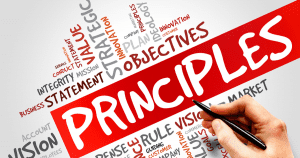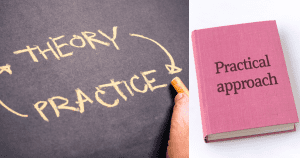Introduction: Power of Kaizen
In today’s fast-paced and competitive business landscape, the pursuit of excellence is a constant endeavour. Amidst this quest, one management philosophy stands out as a beacon of innovation and success: Kaizen. Originating from Japan, Kaizen embodies the principle of continuous improvement, emphasizing small, incremental changes that lead to significant enhancements in processes, products, and services over time. Let’s embark on a journey to uncover the power of Kaizen and discover how it can revolutionize your business.
Thank you for reading this post, don't forget to subscribe!Understanding Kaizen: The Essence of Continuous Improvement

At its core, Kaizen is more than just a methodology; it’s a mindset—a relentless commitment to excellence and a belief in the power of incremental progress. By encouraging every member of the organization, from frontline workers to top executives, to identify and implement improvements in their respective areas, Kaizen fosters a culture of innovation, collaboration, and excellence.
Key Principles of Kaizen

1. Empowerment and Engagement
Kaizen empowers employees at all levels to take ownership of their work and contribute ideas for improvement. By providing opportunities for involvement and recognition, organizations can harness the collective wisdom and creativity of their workforce to drive continuous improvement initiatives.
2. Data-Driven Decision Making
Central to Kaizen is the use of data to identify opportunities for improvement and measure the impact of changes. By collecting and analyzing data on key performance metrics, organizations can make informed decisions and prioritize initiatives that deliver the greatest value.
3. Iterative Approach
Kaizen emphasizes the importance of iterative experimentation and learning. Rather than seeking perfection in one fell swoop, organizations are encouraged to test small changes, gather feedback, and iterate based on results—a process known as the Plan-Do-Check-Act (PDCA) cycle.
Implementing Kaizen: Practical Strategies for Success

1. Establish Clear Goals and Metrics
Define specific, measurable objectives for your Kaizen initiatives, aligned with your organization’s strategic priorities. Establish key performance indicators (KPIs) to track progress and measure the impact of improvements.
2. Foster a Culture of Continuous Improvement
Create an environment where employees feel empowered to suggest ideas for improvement and participate in Kaizen activities. Provide training and resources to develop their problem-solving skills and encourage collaboration across teams.
3. Start Small and Scale Up
Begin with manageable Kaizen projects that address specific pain points or opportunities for improvement. As you build momentum and demonstrate success, gradually expand the scope and scale of your initiatives to drive broader organizational transformation.
4. Celebrate Success and Learn from Failure
Acknowledge and celebrate achievements along the Kaizen journey, recognizing the contributions of individuals and teams. Equally important, embrace failure as a learning opportunity, encouraging reflection and continuous improvement.
Real-World Impact of Kaizen: A Case Study

Let’s examine the story of ABC Manufacturing, a company that embraced Kaizen to enhance productivity and quality in its production process. By implementing Kaizen principles such as standardized work, visual management, and employee empowerment, ABC Manufacturing achieved a 20% increase in efficiency and a 30% reduction in defects within six months, leading to significant cost savings and improved customer satisfaction.
Conclusion: Embrace the Kaizen Mindset for Lasting Success
In conclusion, Kaizen offers a powerful framework for driving continuous improvement and innovation in organizations of all sizes and industries. By embracing the Kaizen mindset, fostering a culture of empowerment and collaboration, and implementing practical strategies for success, businesses can unlock their full potential and achieve sustainable growth in today’s dynamic marketplace.
 hroptimum
hroptimum



